Navigation
Install the app
How to install the app on iOS
Follow along with the video below to see how to install our site as a web app on your home screen.

Note: This feature currently requires accessing the site using the built-in Safari browser.
More options
You are using an out of date browser. It may not display this or other websites correctly.
You should upgrade or use an alternative browser.
You should upgrade or use an alternative browser.
DX vs. FX?
- Thread starter DRB022
- Start date
itznfb
TPF Noob!
- Joined
- May 21, 2008
- Messages
- 1,167
- Reaction score
- 0
- Location
- Pittsburgh, PA
- Website
- www.mgroberts.com
- Can others edit my Photos
- Photos NOT OK to edit
FX is a larger sensor than DX. FX is the 35mm film equivalent of the digital world.
Since the DX size sensor is capable of producing images at such a high quality the extra "reach" you get with DX is often looked at as a benefit to sports/wildlife shooters.
I prefer DX to FX.
In terms of full size image overall quality the FX sensor is capable of producing a higher quality image. $1000 higher? In some cases.... is it worth it cannot be answered as a blanket statement.
Since the DX size sensor is capable of producing images at such a high quality the extra "reach" you get with DX is often looked at as a benefit to sports/wildlife shooters.
I prefer DX to FX.
In terms of full size image overall quality the FX sensor is capable of producing a higher quality image. $1000 higher? In some cases.... is it worth it cannot be answered as a blanket statement.
kundalini
Been spending a lot of time on here!
- Joined
- Jul 18, 2007
- Messages
- 13,607
- Reaction score
- 1,937
- Location
- State of Confusion
- Can others edit my Photos
- Photos NOT OK to edit
Hmmm, did you happen to try the search function that is available? Using only the keywords FULL FRAME for titles, there were at least 36 threads started.
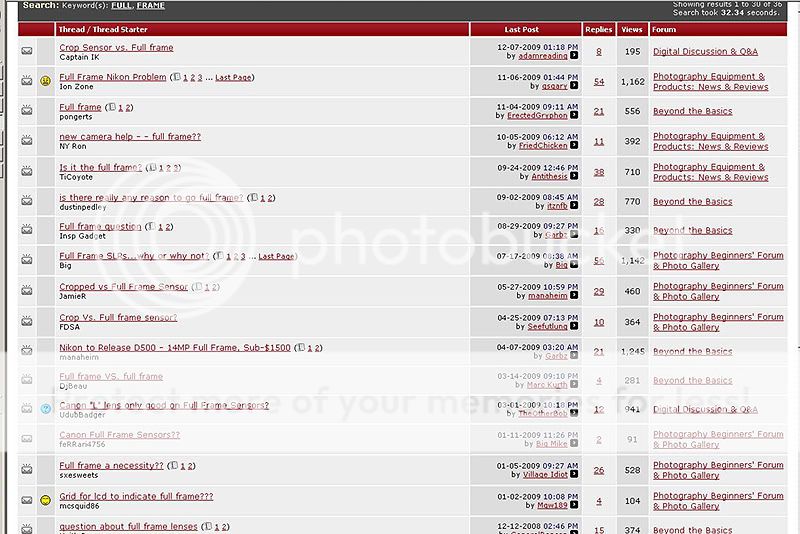

Just a thought, there might be something in those that will answer your question.
Garbz
No longer a newbie, moving up!
- Joined
- Oct 26, 2003
- Messages
- 9,713
- Reaction score
- 203
- Location
- Brisbane, Australia
- Website
- www.auer.garbz.com
- Can others edit my Photos
- Photos NOT OK to edit
lol kundalini a search for FX produces a lot less interesting threads 
One of the biggest benefits of the larger sensor of the same megapixel count such as going from the D300 to the D700 is the ability to capture light. Larger pixels = better signal to noise ratio which gives you the ability to use things like ISO12800. The other thing is the larger sensor provides greater depth of field.
Those are the two biggest upsides to full frame FX cameras. The biggest upside to APS-C or DX sensors is their cropping extends the focal length (a 200mm lens can be essentially thought of as a 300mm), their price, and DX specific lenses are also smaller and lighter than their FX counterparts.
One of the biggest benefits of the larger sensor of the same megapixel count such as going from the D300 to the D700 is the ability to capture light. Larger pixels = better signal to noise ratio which gives you the ability to use things like ISO12800. The other thing is the larger sensor provides greater depth of field.
Those are the two biggest upsides to full frame FX cameras. The biggest upside to APS-C or DX sensors is their cropping extends the focal length (a 200mm lens can be essentially thought of as a 300mm), their price, and DX specific lenses are also smaller and lighter than their FX counterparts.
IgsEMT
No longer a newbie, moving up!
- Joined
- Jul 27, 2009
- Messages
- 2,694
- Reaction score
- 50
- Location
- NYC
- Website
- www.pictureperfectny.com
- Can others edit my Photos
- Photos NOT OK to edit
There is one bad thing about Fx, it is more expensiveol kundalini a search for FX produces a lot less interesting threads
One of the biggest benefits of the larger sensor of the same megapixel count such as going from the D300 to the D700 is the ability to capture light. Larger pixels = better signal to noise ratio which gives you the ability to use things like ISO12800. The other thing is the larger sensor provides greater depth of field.
Those are the two biggest upsides to full frame FX cameras. The biggest upside to APS-C or DX sensors is their cropping extends the focal length (a 200mm lens can be essentially thought of as a 300mm), their price, and DX specific lenses are also smaller and lighter than their FX counterparts.
Dwig
TPF Noob!
- Joined
- Mar 11, 2009
- Messages
- 1,261
- Reaction score
- 1
- Location
- Key West FL
- Website
- happythursday.com
- Can others edit my Photos
- Photos NOT OK to edit
l...The other thing is the larger sensor provides greater depth of field...
A bit ambiguous. If by "greater" you mean "better" or "preferable" then its a statement of opinion and not fact. If by "greater depth of field" you mean "a greater amount of depth of field" then the statement is incorrect.
For a given aperture and with lenses of matching angles of view there is less DOF the larger the format. A larger sensor with a proportionally longer focal length lens (e.g. FX w/ 50mm lens vs DX w/ 33mm lens, which yield matching fields of view) will have less DOF at matching f/stops.
Garbz
No longer a newbie, moving up!
- Joined
- Oct 26, 2003
- Messages
- 9,713
- Reaction score
- 203
- Location
- Brisbane, Australia
- Website
- www.auer.garbz.com
- Can others edit my Photos
- Photos NOT OK to edit
But due to the fact that there is no crop factor different focal lengths must be used. Therefore instead of a 30mm f/1.4 you'd find yourself using a 50mm f/1.4 to get the same looking shot. Except that now means you're moving closer to the subject changing the subject to camera to background ratio and increasing the depth of field.
If you want to argue otherwise I'll hand you my point and shoot and wait for you to give me hair thin depth of field photos. After all it has an f/2.8 lens...
If you want to argue otherwise I'll hand you my point and shoot and wait for you to give me hair thin depth of field photos. After all it has an f/2.8 lens...
Derrel
Mr. Rain Cloud
- Joined
- Jul 23, 2009
- Messages
- 48,225
- Reaction score
- 18,941
- Location
- USA
- Website
- www.pbase.com
- Can others edit my Photos
- Photos OK to edit
Garbz.
I am not sure what your original statement meant WRT to depth of field. An FX sensor camera produces pictures which have less depth of field than the same scene shot on a smaller format camera. To me, the biggest problem with the smaller-format cameras is that they *require* the photographer to use very shot focal length lenses in order to encompass something as mundane as a standing human being; the short focal length lenses used on DX sensor cameras lead to immense depth of field.
In-studio, with a DX format camera, one is often forced to use focal lengths in the 19mm to 35mm focal length range, which leads to backgrounds that are very much rendered in-focus--recognizable folds in muslins, dimples in seamless paper rolls, all sorts of annoying background depth of field goes with the small DX-format d-slr's images.
With a full-frame camera, one will use longer focal lengths for identical image sizes and angular views, and the depth of field will be shallower; less will be in-focus behind the subject, even with the subject rendered the same,exact height. The ability to throw the background decidedly out of focus, the ability to easily achieve foreground/background isolation, are the two main reasons professional wedding, editorial,and sports photographers often prefer full frame cameras to those with smaller sensors.
The smaller the sensor, the deeper the depth of field, per angular view; creating THE SMALLEST EVER film format, the Kodak Disc format, was done by Kodak as a deliberate engineering solution to solve the problem of finding a way to create a camera that would never,ever need to be focused. By making the capture area incredibly tiny, Kodak created a camera that could us a very short focal length lens that would have almost infinite depth of field when focused at about 3.5 feet; the same thing exists with todays Point & SHoot digicams--by using a small capture area, they use short lenses for every angular view they capture, and they have HUGE depth of field. APS-C cameras render images with greater depth of field than 24x36mm sensor cameras do, per angular field of view, in real-world conditions.
What I find ironic is that the 4/3 sensor format is almost the same size as the now-defunct 110 cartridge film format, which was the smallest format in common use before the Disc format was invented in the early 1980's.
I am not sure what your original statement meant WRT to depth of field. An FX sensor camera produces pictures which have less depth of field than the same scene shot on a smaller format camera. To me, the biggest problem with the smaller-format cameras is that they *require* the photographer to use very shot focal length lenses in order to encompass something as mundane as a standing human being; the short focal length lenses used on DX sensor cameras lead to immense depth of field.
In-studio, with a DX format camera, one is often forced to use focal lengths in the 19mm to 35mm focal length range, which leads to backgrounds that are very much rendered in-focus--recognizable folds in muslins, dimples in seamless paper rolls, all sorts of annoying background depth of field goes with the small DX-format d-slr's images.
With a full-frame camera, one will use longer focal lengths for identical image sizes and angular views, and the depth of field will be shallower; less will be in-focus behind the subject, even with the subject rendered the same,exact height. The ability to throw the background decidedly out of focus, the ability to easily achieve foreground/background isolation, are the two main reasons professional wedding, editorial,and sports photographers often prefer full frame cameras to those with smaller sensors.
The smaller the sensor, the deeper the depth of field, per angular view; creating THE SMALLEST EVER film format, the Kodak Disc format, was done by Kodak as a deliberate engineering solution to solve the problem of finding a way to create a camera that would never,ever need to be focused. By making the capture area incredibly tiny, Kodak created a camera that could us a very short focal length lens that would have almost infinite depth of field when focused at about 3.5 feet; the same thing exists with todays Point & SHoot digicams--by using a small capture area, they use short lenses for every angular view they capture, and they have HUGE depth of field. APS-C cameras render images with greater depth of field than 24x36mm sensor cameras do, per angular field of view, in real-world conditions.
What I find ironic is that the 4/3 sensor format is almost the same size as the now-defunct 110 cartridge film format, which was the smallest format in common use before the Disc format was invented in the early 1980's.
Garbz
No longer a newbie, moving up!
- Joined
- Oct 26, 2003
- Messages
- 9,713
- Reaction score
- 203
- Location
- Brisbane, Australia
- Website
- www.auer.garbz.com
- Can others edit my Photos
- Photos NOT OK to edit
**** sorry yes. You're right. I just got them backwards
You get decreased depth of field. Fair enough my first post was at 7am yesterday but that's no excuse for missing it again in the arvo :banghead:
You get decreased depth of field. Fair enough my first post was at 7am yesterday but that's no excuse for missing it again in the arvo :banghead:
DRB022
TPF Noob!
- Joined
- Jul 4, 2009
- Messages
- 81
- Reaction score
- 0
- Can others edit my Photos
- Photos NOT OK to edit
But due to the fact that there is no crop factor different focal lengths must be used. Therefore instead of a 30mm f/1.4 you'd find yourself using a 50mm f/1.4 to get the same looking shot. Except that now means you're moving closer to the subject changing the subject to camera to background ratio and increasing the depth of field.
If you want to argue otherwise I'll hand you my point and shoot and wait for you to give me hair thin depth of field photos. After all it has an f/2.8 lens...
Thanks that cleared a few things up.
Similar threads
- Replies
- 15
- Views
- 2K
- Replies
- 7
- Views
- 601
New Topics
-
-
Instax Wide 300 Lens cover broken, not shutting properly
- Latest: PianoMan343
-
-

![[No title]](/data/xfmg/thumbnail/35/35263-86f580cf5d28d23109a45984030a79ad.jpg?1619736968)
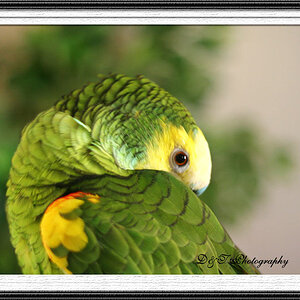
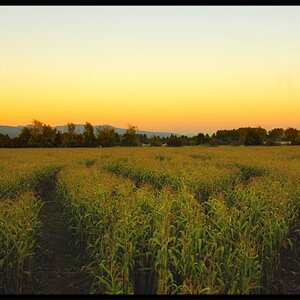

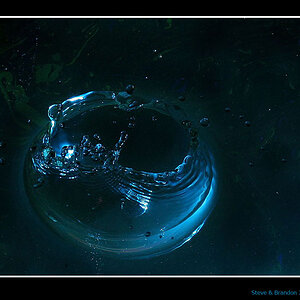

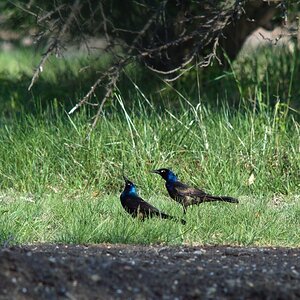
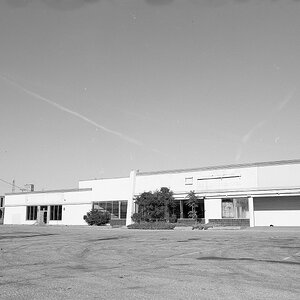
![[No title]](/data/xfmg/thumbnail/35/35871-d9de705fa64b06051419be6d3739d6ac.jpg?1619737197)
![[No title]](/data/xfmg/thumbnail/35/35872-12704b8c65e1c009d7089ccba367abb6.jpg?1619737198)
![[No title]](/data/xfmg/thumbnail/42/42272-c0d91b9d0872bcdfbcdfb5bb0529e302.jpg?1619740081)
